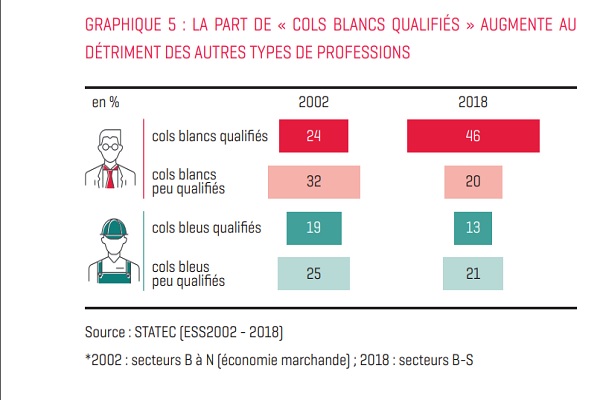 Credit: STATEC
Credit: STATEC
STATEC has published a report in which it details the rise of job polarisation in Luxembourg.
According to the report, white-collar workers and tertiary education graduates dominate high added value branches, with Luxembourgish residents occupying the highest-paying jobs.
The fact that the economy of the Grand Duchy is strongly dominated by high added value services is reflected in the structure of employment, both in the skill levels required and in the predominant types of jobs. White-collar workers now represent two-thirds of the salaried workforce; this includes qualified (46%) and low-qualified white-collar workers (20%). In four of the highest paying sectors, salaried employment is almost exclusively represented by qualified white-collar workers.
In addition, required qualification levels have sharply increased the share of tertiary education graduates to the detriment of secondary education graduates. In some sectors, more than 70% of employees have a tertiary level education. These include specialised, scientific and technical activities (81%), education (77%), financial and insurance activities (74%) and the information and communication sector ( 72%). In the health and social action sector, this rate is 40%, with the vast majority having a bachelor's level education. The share of posts at the secondary level decreased from 48% to 22% between 2002 and 2018, while that of posts at the tertiary level rose from 47% to 74%.
Whilst Luxembourgish residents represent just 26.7% of the salaried workforce, behind foreign residents (27.8%) and cross-border workers (45.5%), they tend to occupy the highest-paying jobs. In fact, 65% of Luxembourgish residents work in highly remunerative sectors, compared to 42% of foreign residents and only 37% of cross-border workers. The latter tend to work more in industry, commerce, construction and administrative and support services.








